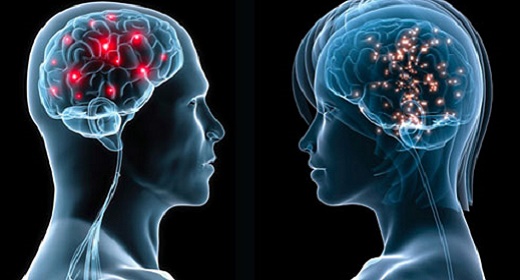by Jennifer Glatt: Sciatica can be debilitating. Preventing sciatica requires some life changes, but it’s worth it…
I have an admission—my posture is awful. Like lots of people, I’m working from home, hunched over my computer for hours on end, ping-ponging from chair to couch to bed, trying to find a comfortable position. But no matter where I go, my slouching-while-sedentary habit follows, and I’m starting to get twinges of rebellion in my lower back. When I start to feel a tingling sensation down the back of my thigh, I remember that I’ve limped down this road before and I take steps to prevent sciatica.
What Is Sciatica?
Sciatica is the pain that is caused by the inflammation or irritation along the path of the sciatic nerve. Sciatica is not a diagnosis, but a symptom of an underlying medical condition; for example, a herniated disc; a slipped vertebra; a tight muscle, such as the piriformis muscle, which sits near the top of the hip joint; or spinal stenosis, a narrowing of the spaces within your spine.
“Sciatic pain is a very common problem. The more the nerve is irritated, the more intense or the further down the leg the pain will travel,” says Christy Branco, PT, OCS, a physical therapist with Bodies in Balance in Wilmington, NC. Often, it’s caused by people simply overdoing it, she notes. But: “People who sit all day for work or other reasons are at a high risk of experiencing sciatic pain due to the pressure prolonged sitting puts on the spine.”
Active Rest for Sciatica
It may sound (and feel) counterintuitive, but when sciatic pain appears, it’s time to move a little. Branco recommends taking a brief walk, standing and extending backward, or lying on your stomach and propping on the elbows. Exercise also releases endorphins, which help reduce your pain perception.
Yoga for Preventing Sciatica
Try these poses for relief:
- Bridge pose: Helps stretch the hip flexors and strengthen the core and glutes.
- Child’s pose: Lengthens and stretches the spine, promoting flexibility and openness in the hips, thighs, and lower back.
- Cobra pose: Stretches and strengthens the spine.
- Downward-facing dog: This forward bend helps bring your body into alignment.
- Locust pose: Stabilizes your core and lower back, strengthens your spine, glutes, and thighs, and promotes flexibility in your hips.
- Pigeon pose (reclining, sitting, and forward variations): Stretches the glutes and hips as well as the piriformis muscle.
“Yoga With Adriene” (yogawithadriene.com) has motivated me to hit the mat on an almost daily basis. Her YouTube library of free yoga videos are helping me improve my strength, balance, and flexibility—unfurling my muscles a little at a time.
Hot/Cold Therapies
Applying heat to the affected area encourages blood flow, which promotes healing, while applying ice can help reduce inflammation. Apply an ice pack to the painful area for 15 minutes once every hour, then apply heat for 15 minutes every two or three hours.
Acupressure and Acupuncture
Traditional Chinese medicine suggests treating the following points for managing sciatica.
- Urinary bladder 23: This point is located on the lower back and reduces muscle tension and low-back pain.
- Urinary bladder 40: Located directly in the middle of the crease at the back of each knee, this point treats all the major pain sensations felt along the spine.
- Urinary bladder 62: This point is located just below the ankle bone on the outer side of each ankle and relieves lumbar spine tension.
Check Your Chakras
Sciatica issues are most closely associated with the second of the seven chakras, the sacral chakra. It is located just below the navel, right in the center of your lower belly. In your back, it is located in the lumbar spine. The sacral chakra is said to be associated with the ability to express emotions and experience pleasure, so emotional anxiety may be one sciatic-causing culprit. Orange foods (oranges, carrots, sweet potatoes, peaches, apricots, mangos, papayas, pumpkin, and mandarins) are considered all healing foods for the sacral chakra.
Banish Inflammation With Food
Nutrition plays a key role in how much inflammation is present in our bodies. Heeding the adage “you are what you eat,” if you’re suffering from sciatica, consider adjusting your diet to include anti-inflammatory foods such as whole grains, fruits, vegetables, nuts, fatty fish, and soluble and insoluble fiber. Good fats can also be found in sunflower seeds, pumpkin seeds, walnuts, and flaxseeds.
Increase your potassium by eating more bananas, oranges, potatoes, apricots, and spirulina. Turmeric, ginger, and green and black tea are also full of anti-inflammatory properties that help build immunity and improve overall health. Be sure to avoid saturated fats, fried food, high-fat dairy products, fatty red meats, and processed sugary foods.
[Also read: “Increase Ojas to Strengthen Your Immune System.”]
Take Your Vitamins to Prevent Sciatica
Magnesium, vitamin D, vitamin E, vitamin B12, vitamin B6, zinc, selenium, and omega-3 fatty acids are micronutrients shown to reduce inflammation. In addition, stay hydrated, recommends Branco, as drinking water is very important for optimal function of the tissues in the body.
Make Time for Massage
Deep tissue massage manipulates tissues in layers to relax, extend, and unlock persisting tension. (One recent study even indicated that deep tissue massage may be as effective as nonsteroidal anti-inflammatory drugs for relieving low back pain.) Soft tissue massage also encourages your body to release endorphins, relieving pain and increasing feelings of wellbeing. Swedish, hot-stone, neuromuscular, and myofascial release are all massage methods that will increase blood flow and decrease tension—and who couldn’t use some of that these days?
Consider Chiropractic Care
“Someone might seek out physical therapy or chiropractic if their pain does not resolve fairly quickly or if they experience multiple bouts of sciatic pain,” says chiropractor Chris Branco (Christy’s husband), owner of Oleander Chiropractic. When muscles knot and form a trigger point, chiropractic care can provide relief. Realigning the spine through manual manipulation or adjustments is one of many methods in a chiropractor’s arsenal.
“Both physical therapists and chiropractors will perform an evaluation to help determine the appropriate course of treatment. There are many factors including age, previous injuries or surgeries, fitness/activity level, work and leisure activities, and smoking that will affect the recovery process,” he says.
Prop a Pillow Behind You
While you can’t buy your way to better health, there are likely a few items that will assuage a little of the pain sciatica brings. A standing desk is a good alternative to staying sedentary all day. When you are sitting (in an ergonomically correct chair, naturally), make sure to support your lower back with either a lumbar pillow or a gel seat cushion, designed specifically to promote healthy posture and reduce pressure on the tailbone. (You may want to keep one in your car, as well.)
Preventing Sciatica … Final Words
Following these strategies for preventing sciatica will hopefully put you back on the path to healing. Having done yoga in the name of research for this article, I’m now armed with new stretches, an awareness of taking my time when I stretch, and an appreciation for how much my spine supports me. Flowing from cobra pose to downward dog feels like such a gift to myself at the end of a long day. And while I still occasionally find myself contorted, pretzel-like on the couch with my computer, I’m getting better at noticing my discomfort and adjusting any bad habits.










































